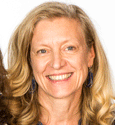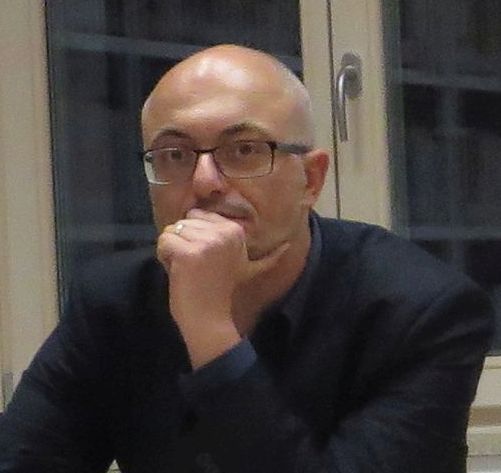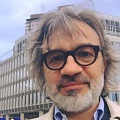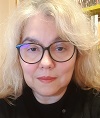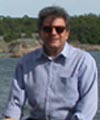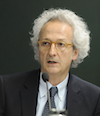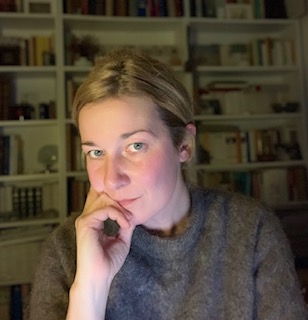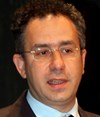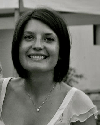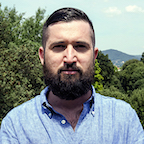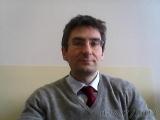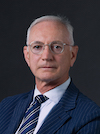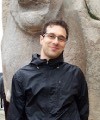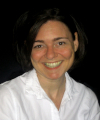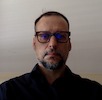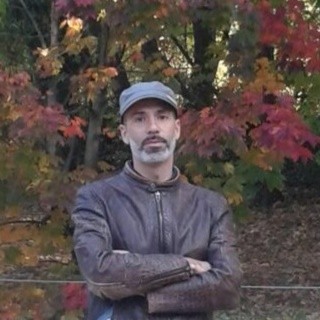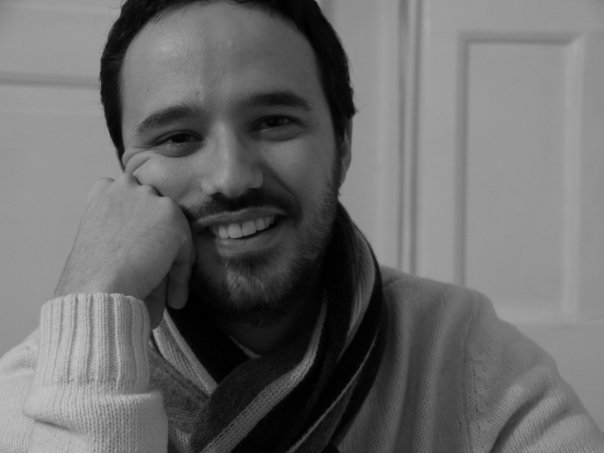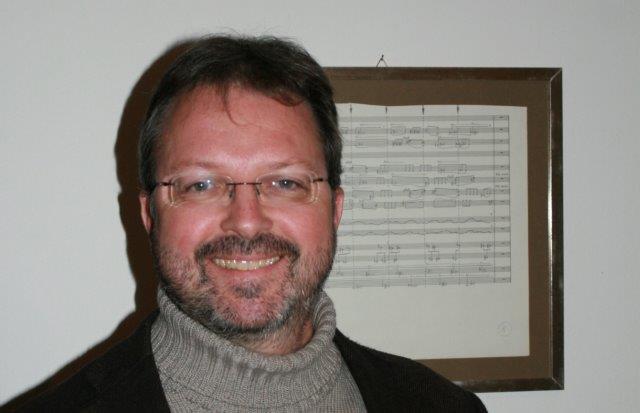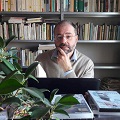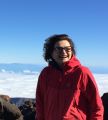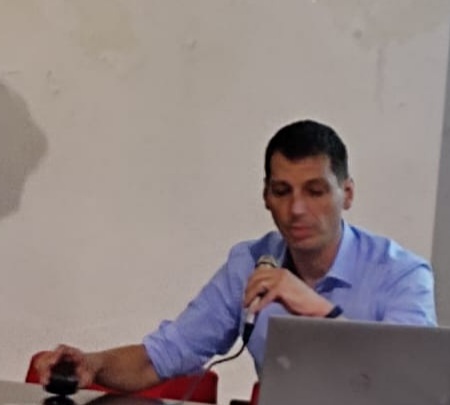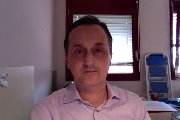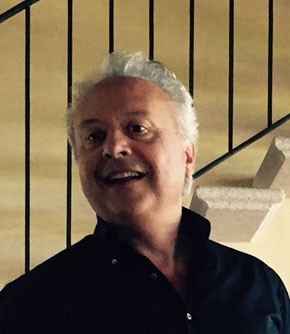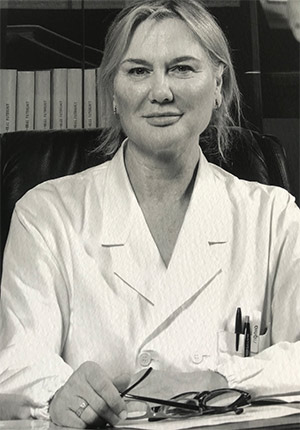Studying at the University of Verona
Here you can find information on the organisational aspects of the Programme, lecture timetables, learning activities and useful contact details for your time at the University, from enrolment to graduation.
Academic calendar
The academic calendar shows the deadlines and scheduled events that are relevant to students, teaching and technical-administrative staff of the University. Public holidays and University closures are also indicated. The academic year normally begins on 1 October each year and ends on 30 September of the following year.
Course calendar
The Academic Calendar sets out the degree programme lecture and exam timetables, as well as the relevant university closure dates..
| Period | From | To |
|---|---|---|
| CuCi IA | Sep 21, 2020 | Oct 31, 2020 |
| CuCi IB | Nov 9, 2020 | Jan 9, 2021 |
| CuCi IIA | Feb 15, 2021 | Apr 1, 2021 |
| CuCi IIB | Apr 14, 2021 | May 29, 2021 |
| Session | From | To |
|---|---|---|
| sessione d'esame invernale CuCi | Jan 11, 2021 | Feb 13, 2021 |
| sessione d'esame estiva CuCi | Jun 7, 2021 | Jul 24, 2021 |
| sessione d'esame autunnale CuCi | Aug 23, 2021 | Sep 18, 2021 |
| Session | From | To |
|---|---|---|
| sessione di laurea invernale 19-20 | Apr 7, 2021 | Apr 13, 2021 |
| sessione di laurea estiva 20-21 | Jul 5, 2021 | Jul 10, 2021 |
| Sessione autunnale di laurea a.a. 2020/21 | Nov 8, 2021 | Nov 13, 2021 |
| Sessione straordinaria di laurea a.a. 2020/21 | Mar 28, 2022 | Apr 2, 2022 |
| Period | From | To |
|---|---|---|
| Festa di Ognissanti | Nov 1, 2020 | Nov 1, 2020 |
| Chiusura Ateneo ponte Immacolata | Dec 7, 2020 | Dec 7, 2020 |
| Festa dell'Immacolata | Dec 8, 2020 | Dec 8, 2020 |
| Vacanze di Natale | Dec 24, 2020 | Jan 6, 2021 |
| Vacanze di Pasqua | Apr 2, 2021 | Apr 6, 2021 |
| Festa della liberazione | Apr 25, 2021 | Apr 25, 2021 |
| Festa del lavoro | May 1, 2021 | May 1, 2021 |
| Festa del Santo Patrono | May 21, 2021 | May 21, 2021 |
| Sospensione delle lezioni | May 22, 2021 | May 22, 2021 |
| Festa della Repubblica | Jun 2, 2021 | Jun 2, 2021 |
| Vacanze estive | Aug 9, 2021 | Aug 15, 2021 |
Exam calendar
Exam dates and rounds are managed by the relevant Culture and Civilisation Teaching and Student Services Unit.
To view all the exam sessions available, please use the Exam dashboard on ESSE3.
If you forgot your login details or have problems logging in, please contact the relevant IT HelpDesk, or check the login details recovery web page.
Should you have any doubts or questions, please check the Enrollment FAQs
Academic staff

Bassetti Massimiliano
 massimiliano.bassetti@univr.it
massimiliano.bassetti@univr.it
 045802 8376
045802 8376
 giovanni.bernardini@univr.it
giovanni.bernardini@univr.it
 riccardo.bertolazzi@univr.it
riccardo.bertolazzi@univr.it
 luca.bochicchio@univr.it
luca.bochicchio@univr.it
 stefania.cretella@univr.it
stefania.cretella@univr.it
 dario.donetti@univr.it
dario.donetti@univr.it
 vincenzo.giannotti@univr.it
vincenzo.giannotti@univr.it
 piergiovanna.grossi@univr.it
piergiovanna.grossi@univr.it
 francesco.lupi@univr.it
francesco.lupi@univr.it
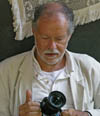
Mastrocinque Attilio
 attilio.mastrocinque@univr.it
attilio.mastrocinque@univr.it
 +39 045802 8386
+39 045802 8386
 marco.menato@univr.it
marco.menato@univr.it
 alberto.scandola@univr.it
alberto.scandola@univr.it
 carlo.vannini@accademiabelleartiverona.it
carlo.vannini@accademiabelleartiverona.it
Study Plan
The Study Plan includes all modules, teaching and learning activities that each student will need to undertake during their time at the University.
Please select your Study Plan based on your enrollment year.
1° Year
| Modules | Credits | TAF | SSD |
|---|
2° Year activated in the A.Y. 2021/2022
| Modules | Credits | TAF | SSD |
|---|
3° Year activated in the A.Y. 2022/2023
| Modules | Credits | TAF | SSD |
|---|
| Modules | Credits | TAF | SSD |
|---|
| Modules | Credits | TAF | SSD |
|---|
| Modules | Credits | TAF | SSD |
|---|
| Modules | Credits | TAF | SSD |
|---|
Legend | Type of training activity (TTA)
TAF (Type of Educational Activity) All courses and activities are classified into different types of educational activities, indicated by a letter.
European Art History (i) (2022/2023)
Teaching code
4S001435
Teacher
Coordinator
Credits
6
Also offered in courses:
- History of Modern Art of the course Bachelor's degree in Foreign Languages and Literatures
Language
Italian
Scientific Disciplinary Sector (SSD)
L-ART/02 - HISTORY OF MODERN ART
Period
1 A, 1 B
Learning objectives
Being able to read the architectural forms and recognize the stylistic characteristics of the individual authors.
Prerequisites and basic notions
Prerequisites: You are expected to possess a knowledge of the basics, namely from manuals, of the history of Italian art and its periodization from Gothic to Neoclassicism.Reference manuals:
G. Dorfles, M. Ragazzi, Civiltà d’Arte. Dalle origini all’arte Gotica, 1, Bergamo, Edizioni Atlas; G. -Dorfles, C. Dalla Costa, G. Pieranti, Civiltà d’arte. Dal Quattrocento all’Impressionismo, 2, Bergamo, Edizioni Atlas, in the different editions.
Matteo Cadario, Cristina Fumarco. Il nuovo vivere l’arte, 1. L’antichità e il Medioevo; L. Beltrame, C. Fumarco, Il nuovo vivere l’arte, 2. L’età moderna, Edizioni scolastiche Bruno Mondadori.
N. Frapiccini, N. Giustozzi, Le storie dell’arte, Hoepli, in the different editions
Program
Program:
Contents
The course follows a diachronic itinerary of art history from the Late Gothic to Neoclassicism. It addresses, as a premise, a reflection on periodization, starting from the Romanesque and Gothic.
The student will be able to choose only some of the topics listed here on the basis of personal interests, but he must demonstrate that he has learned the entire path in its general lines.
The criteria for choosing the topics and their number will be specified later.
Reference point for the preparation are the notes of the lessons, a manual to be agreed and some assessments for which it will be sufficient to start surfing the internet.
Introduction
Henry Focillon, a vision on Western art. The Romanesque. Why Romanesque. Meaning of the term. Historical context. Geography and chronology
The Gothic. Why gothic. New religious orders. Feudalism and monarchies. Religious mentality (Abbot Suger's aesthetics and Bernardo di Chiaravalle).
Topics
1. Late Gothic or International Gothic: the art of the autumn of the Middle Ages according to the definition of Huizinga. Before that: hints of art at the papal court of Avignon. The courts and their contacts. European centers of the international Gothic (the courts); Italian centers. University of Paris, Bohemia, the Visconti court between Milan and Pavia and its European cultural range. The case of the Milan Cathedral.
Art of the Alpine Arch; the master of Thon; Weicher Stil.
Persistence of the late Gothic in Europe.
2. Painting in the Flanders. Geography and history: the Duchy of Burgundy. The sculptures by Claus Sluter.
The first generation of the “Flemish school”, the protagonists: Jan Van Eyck, Rogier van der Weyden and Robert Campin. The second generation: Petrus Christus and Dieric Bouts. The latest generation of "primitives": Hans Memling and Hugo van der Goes.
Flemish painting and Italian painting, the presences, the centers, the influences.
The perception of the Florentine Renaissance in Europe
Aragonese Naples, foreign presences; Antonello da Messina and Flemish art.
Pedro Berruguete: a Spaniard of Flemish inspiration in Urbino (1474-1482).
Just of Ghent; a Flemish in Urbino: (1473-1475).
3. German Renaissance painters, with attention to the masters of woodcut and intaglio art and to the diffusion and influence of their graphic work: Martin Schongauer and Albrecht Dürer. Other protagonists: Hans Holbein, Lucas Cranach, Albrecht Altdorfer, Mattias Grünewald, Hans Baldung-Grien. An example of the great season of wooden sculpture: Tilman Riemenschneider (the Rothenburg altar).
The French fifteenth century, with particular regard for Jean Fouquet and his trip to Italy.
4. Modern manner in the Veneto and the foreign presences: the stays of Albrecht Dürer, the relationships with Giovanni Bellini, give and take, with particular regard for Giorgione. The altarpiece of the Madonna del Rosario for San Bartolomeo, the ensemble of emblematic values of an historical moment.
Hieronymus Bosch, with attention to his collecting fortune in Venice. The interpretative problematic, especially of religious nature, of his work.
Pieter Bruegel the Elder and his journey to Italy (1551).
5. Leonardo, Michelangelo, Raffaello, Sebastiano del Piombo: occasional European stays and commissions, their "universal" fortune. 1527 Sack of Rome, the diaspora of artists.
Fontainebleau: the project by Francis I.
6. Titian and the Habsburgs, Titian and the other European courts.
Mannerism as a European phenomenon. Foreign Mannerists in Florence; Giambologna and Giovanni Stradanus,
Art at the court of Rudolf II.
7. Protestantism and art, post-Tridentine art. The principles and different approaches to the figurative arts, regarding the function, contents, attitudes and mentality of the recipients and collectors.
The basic premises: the Carracci, naturalism and the classical ideal, Annibale Carracci and the Farnese Gallery, classicism.
Caravaggio, painting of reality.
8. The Baroque: general concepts. Rome as a European landmark. Bernini and the late trip to France.
The protagonists of seventeenth-century European painting, between classicism, Caravaggism and Baroque.
England: Inigo Jones, Palladio's fortune and Neopalladianism.
Foreword on the history and geography of the southern and northern Netherlands.
Southern Netherlands: Rubens, his stay in Italy, his extraordinary European fortune; Anton van Dyck, between Flanders and England, with particular regard to portraiture and his presence in Genoa and Rome.
Northern Netherlands, historical and confessional context, collecting history: Rembrandt van Rijn, Jan Vermeer.
France: the Caravaggeschi. The protagonists Nicolas Poussin, Claude Lorrain, Simon Vouet, Louis Le Nain, Georges de la Tour, Charles Le Brun
Spain, the Siglo de Oro. Between Seville and Madrid.
Premise. El Greco and his European path, an extraordinary case of late Mannerist persistence.
Premise: Jusepe de Ribera, Spagnoletto in Naples.
The protagonists: Diego Velàsquez, Francisco de Zurbaràn, Bartolomé Esteban Murillo. Hints to Juan Sánchez Cotán, still life, to Juan Bautista Maíno.
9. Rococo: French phenomenon, European emulation.
Painting in France: Jean-Antoine Watteau, Jean-Honoré Fragonard, François Boucher, Jean-Baptiste-Siméon Chardin, Jean-Étienne Liotard
English painting: William Hogarth; conversation piece (the group portrait genre), Joshua Reynolds, Thomas Gainsborough.
10. The fortune in Europe of the Venetian painters of the eighteenth century.
Marco and Sebastiano Ricci, Giovanni Antonio Pellegrini, Rosalba Carriera.
Giovanni Battista Tiepolo in Würzburg and Madrid.
Canaletto, landscape painting, his European collecting fortune, his English stay.
11. Neoclassicism. The poetics, general concepts.
Antonio Canova, profile; his great clients: France, England, Germany, Austria.
Anton Raphael Mengs; Jacques-Louis David and history painting; Berthel Thorvaldsen.
To conclude: Francisco Goya.
Bibliography
Didactic methods
Teaching methods: Lectures with image projection, then made available to the student.
Learning assessment procedures
Assessment: written exam. Examination mode: written. The four-hour written examination involves a written paper, in response to six questions. The student will cover some topics discussed in class as a whole and for specific aspects that will be indicated in the wording of the question. It is, therefore, an "open" question and also regarding specific points of the topics covered.
The questions will refer to six topics of your choice: two topics from the first block, two from the second block, one from the third block and one from the fourth block.
For preparation refer to lecture notes, lecture recordings available on moodle as long as it is allowed by the University. In addition, refer to the high school art history textbook. Consultation of encyclopedic entries available online is considered useful. As recommended in class on several occasions, rely on the archive of images collected personally by the student during lectures and exam preparation, for example by drawing on google images. Part of this essential archive is already offered in moodle, but only for topics covered in class and less easily accessed.
As a facilitation in exam scheduling, the student is allowed to split the exam into two sessions (the first call for topics in the first and second blocks, a second call for those in the third and fourth blocks). Calls from different sessions may be chosen. In case the student chooses to split the exam, communication by e mail is requested the week before the appeal.
Evaluation criteria
Assessment criteria: The student's ability to formulate an independent argument on authors, problems and stylistic issues based on the questions delivered in the written test will be assessed. Ability to independently express connections and comparisons between personalities and works to which they belong will be especially evaluated.
Criteria for the composition of the final grade
Composition of the final grade: The final test can be divided into several modules, which will be assigned a partial grade. The average of the partial grades assigned to each part will result in the final grade recorded on the student's transcript.
Exam language
italiano
Type D and Type F activities
| years | Modules | TAF | Teacher |
|---|---|---|---|
| 1° 2° 3° | Castelvecchio Lectures (City Art Museums) | F |
Alessandra Zamperini
(Coordinator)
|
| 1° 2° 3° | C.T.G. Lectures | F |
Alessandra Zamperini
(Coordinator)
|
| 1° 2° 3° | Giornata mondiale della poesia | F |
Arnaldo Soldani
(Coordinator)
|
| 1° 2° 3° | Giovedì' culturali dell'ISSR I ciclo | F |
Tiziana Franco
(Coordinator)
|
| 1° 2° 3° | The Unesco World Heritage Sites | F |
Silvana Bianchi
(Coordinator)
|
| 1° 2° 3° | Il testo en abyme: rappresentazioni della scrittura nell’Europa romantica - Convegno internazionale del CRIER - 5-6 novembre 2020 | F |
Corrado Viola
(Coordinator)
|
| 1° 2° 3° | Orientaday | F |
Tiziana Franco
(Coordinator)
|
| years | Modules | TAF | Teacher |
|---|---|---|---|
| 1° 2° 3° | Castelvecchio Lectures (City Art Museums) | F |
Alessandra Zamperini
(Coordinator)
|
| 1° 2° 3° | Convegno su carlo gozzi nel terzo centenario della nascita | F |
Nicola Pasqualicchio
(Coordinator)
|
| 1° 2° 3° | C.T.G. Lectures | F |
Alessandra Zamperini
(Coordinator)
|
| 1° 2° 3° | Giovedì' culturali dell'ISSR I ciclo | F |
Tiziana Franco
(Coordinator)
|
| 1° 2° 3° | How to write your dissertation | F |
Alessandro Arcangeli
(Coordinator)
|
| years | Modules | TAF | Teacher | |
|---|---|---|---|---|
| 1° | Introduction to the study of decorative arts | F |
Valerio Terraroli
(Coordinator)
|
|
| 1° 2° 3° | Attivita' FAI | F | Not yet assigned | |
| 1° 2° 3° | Practical exercises for the recognition of works of art | - |
Enrico Dal Pozzolo
(Coordinator)
|
|
Career prospects
Module/Programme news
News for students
There you will find information, resources and services useful during your time at the University (Student’s exam record, your study plan on ESSE3, Distance Learning courses, university email account, office forms, administrative procedures, etc.). You can log into MyUnivr with your GIA login details: only in this way will you be able to receive notification of all the notices from your teachers and your secretariat via email and soon also via the Univr app.
Graduation
List of theses and work experience proposals
| theses proposals | Research area |
|---|---|
| Ambiti di tesi | Art & Architecture - Art & Architecture |
| Stage | Research area |
|---|---|
| Lavorare in archivio | Various topics |


